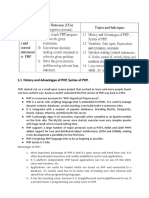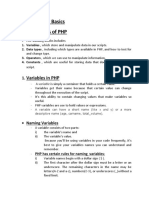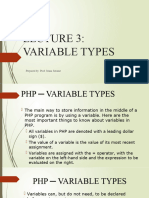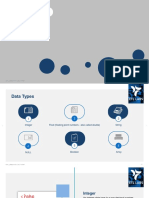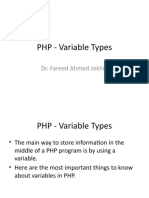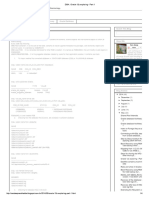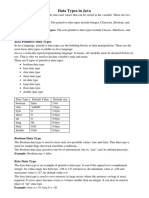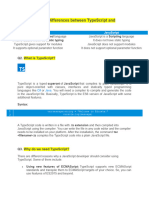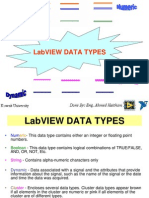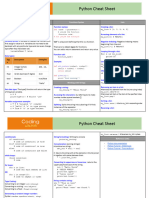0% found this document useful (0 votes)
75 views18 pagesPhpmysql 04 PHP Data Types
This document discusses PHP data types. PHP is a dynamic, loosely typed language that supports several built-in data types including integers, floats, strings, Booleans, arrays, objects, and NULL. Scalar data types can hold only one value at a time and include integers, floats, strings, and Booleans. Integers can be positive or negative and represented in decimal, hexadecimal, or octal format. Floats represent numbers with decimal points. Strings hold letters, numbers, and special characters within single or double quotes. Booleans represent true or false values.
Uploaded by
Abshir AhmedCopyright
© © All Rights Reserved
We take content rights seriously. If you suspect this is your content, claim it here.
Available Formats
Download as PDF, TXT or read online on Scribd
0% found this document useful (0 votes)
75 views18 pagesPhpmysql 04 PHP Data Types
This document discusses PHP data types. PHP is a dynamic, loosely typed language that supports several built-in data types including integers, floats, strings, Booleans, arrays, objects, and NULL. Scalar data types can hold only one value at a time and include integers, floats, strings, and Booleans. Integers can be positive or negative and represented in decimal, hexadecimal, or octal format. Floats represent numbers with decimal points. Strings hold letters, numbers, and special characters within single or double quotes. Booleans represent true or false values.
Uploaded by
Abshir AhmedCopyright
© © All Rights Reserved
We take content rights seriously. If you suspect this is your content, claim it here.
Available Formats
Download as PDF, TXT or read online on Scribd
/ 18













